1940s
Beautiful Bodies by Chambers
The Washington DC mortuary of W.W. Chambers caused a scandal when it issued a calendar for 1948 featuring scantily-clad models to advertise its embalming business. Tagline: Beautiful Bodies by Chambers.Time magazine (Jan 12, 1948) criticized it as "frank vulgarity." Although that didn't stop them from reprinting a page of the calendar (below) for the benefit of its readers.
You can read an obituary of Chambers himself here. He died in 1954 and was quite a character.
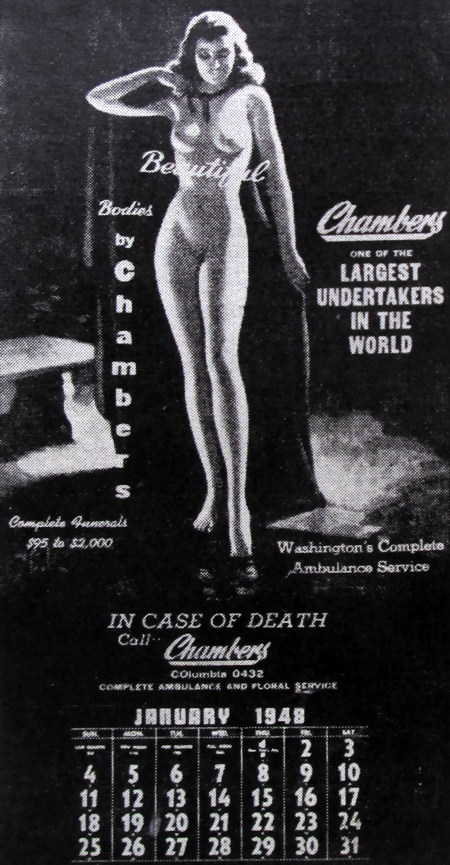
Posted By: Alex - Mon Aug 24, 2015 -
Comments (8)
Category: Death, 1940s
Party Record: The Urinal
Posted By: Paul - Mon Aug 17, 2015 -
Comments (4)
Category: Bathrooms, Humor, Body Fluids, 1940s, Genitals
Follies of the Madmen #257
Housewife wielding an axe?!? Don't get your hopes up. There is no John-Waters-style carnage ahead in this commercial.
Man, that appliance is huge. Where would it fit in a modern urban kitchen? Maybe in a McMansion....
What do you think the cherry cobbler cooked adjacent to the ham and sweet potatoes is going to taste like?
Posted By: Paul - Wed Aug 12, 2015 -
Comments (7)
Category: Business, Advertising, Products, Domestic, Appliances, Food, 1940s
Siwash, the Duck Who Fought with the Marines in WWII


[Click text to enlarge]
Original article here.
Did Siwash actually have a little tailored uniform? Because that would be the greatest thing ever.
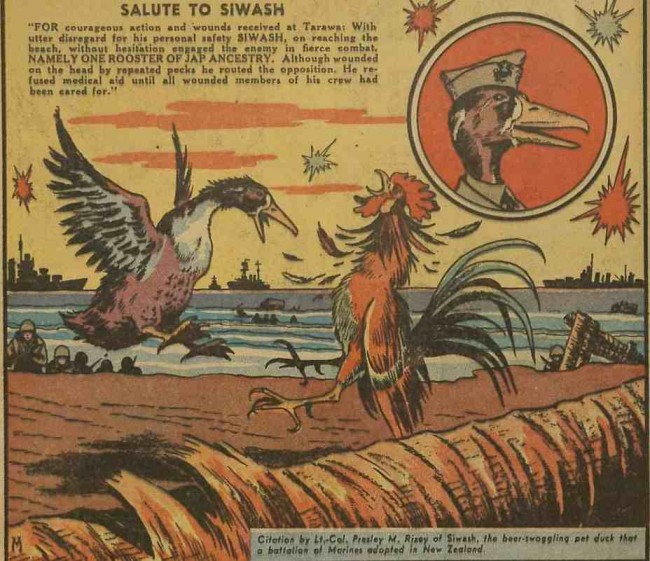

Posted By: Paul - Wed Aug 05, 2015 -
Comments (3)
Category: Animals, War, 1940s
Mystery Gadget 31
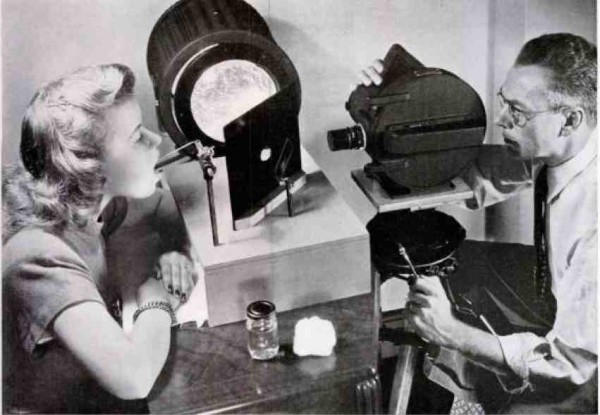
What is going on here?
The answer is here.
Posted By: Paul - Tue Aug 04, 2015 -
Comments (6)
Category: Technology, 1940s
“All you fella die finish!”
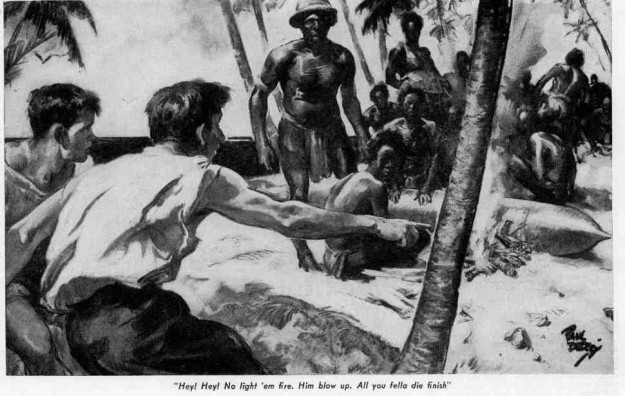
Nothing makes for better reading than white men, savages and explosives.
Read the story here.
Posted By: Paul - Mon Aug 03, 2015 -
Comments (2)
Category: Destruction, Literature, Stereotypes and Cliches, 1940s, South Pacific and Polynesia
Man vs. Horse, 1947
The experts predicted that the man vs. horse tug-of-war organized in Waterloo, Oregon back in 1947 would be no contest at all. The man, 225-pound Chester Fitzwater, was lying on the ground, his feet braced against a wood block. To win, he simply had to remain in place for three minutes. The horse, Big Baldy, was said not to have a chance.Dr. Raymond T. Ellickson, physics professor at Reed College in Portland, estimated 1900-pound Baldy would have to exert about 16,000 pounds worth of effort to up-end Fitzwater.
Ellickson figured it would take a 3000-pound pull just to get the long rope taut, and then Baldy would have only an angle of 1 degree from the horizontal to pull against.
Other scientists advised about the same, and an even more discouraging report—for old Baldy—came from rope dealers. They said the one-inch rope would break at approximately 9000 pounds of pull—far short of the 16,000 Dr. Ellickson believes necessary.
It took about a second for Big Baldy to prove the experts wrong. As soon as the rope tightened, "Fitzwater lurched into the air, knocked over a photographer and some spectators, and crashed into the mud."
Several other brawny men subsequently challenged the horse to the same contest, believing they would last longer. They didn't.
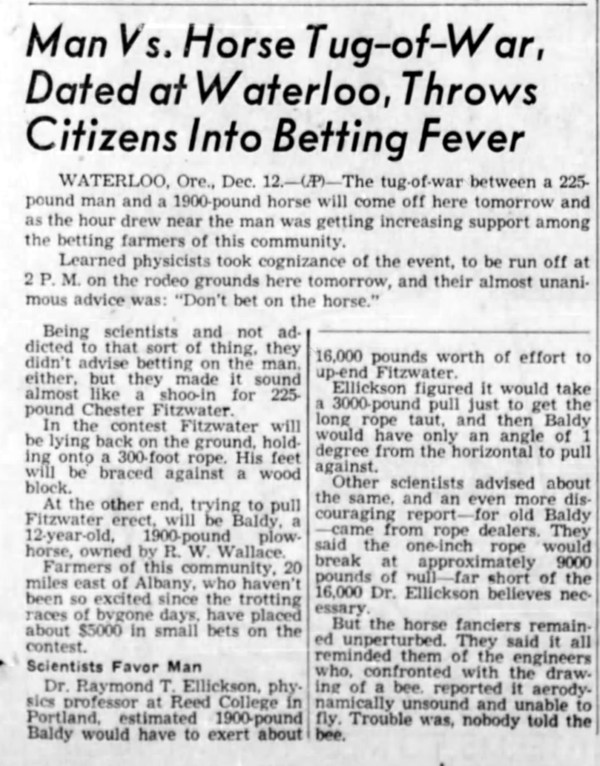
The News-Review (Roseburg, Oregon) - Dec 12, 1947
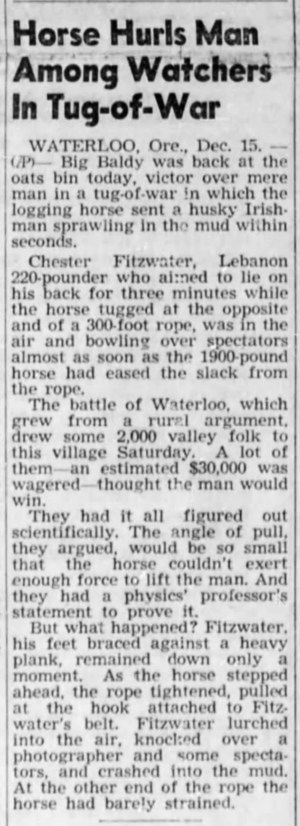
The News-Review (Roseburg, Oregon) - Dec 15, 1947
Posted By: Alex - Tue Jul 28, 2015 -
Comments (6)
Category: Sports, 1940s
1948 Valvoline Ad
The connection between "the girl" in the swimsuit and the "faultlessly lubricated" car seems a bit of a stretch. But hey, who needs a logical reason when you've got a girl in a swimsuit in your ad!Source: Time - Feb 16, 1948
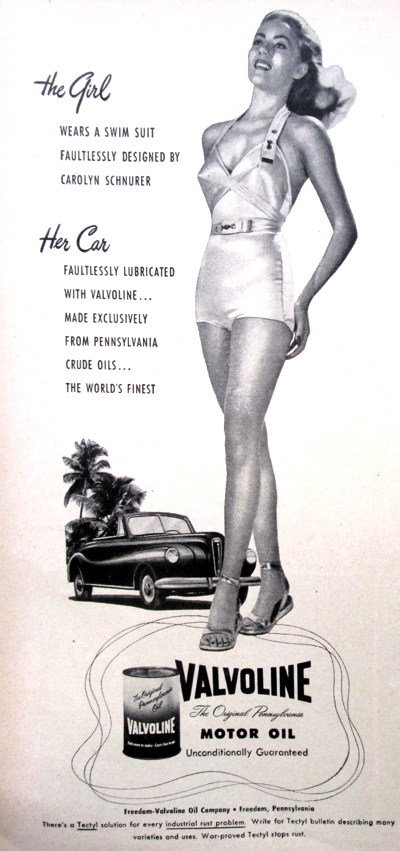
Posted By: Alex - Sat Jul 25, 2015 -
Comments (9)
Category: Advertising, 1940s
Creepy 1948 ad for electro-shock therapy
Back in the 1940s, electro-shock therapy (or "electro-tonic therapy") was promoted as a breakthrough treatment for depression. But it never managed to live up to the hype and was eventually mostly replaced by chemical treatments (popping pills). Though, from what I understand, it's still used in certain situations.If the medical industry was promoting electro-shock therapy today, I imagine they'd show pictures of happy people running through fields and playing with grandchildren. But this 1948 ad (Time - Sep 20, 1948) offered a slightly more realistic and disturbing image.
Note the line: "Brain disclosed for illustration only." Glad they clarified that.

Posted By: Alex - Sat Jul 11, 2015 -
Comments (7)
Category: 1940s, Mental Health and Insanity
Mystery Illustration 7
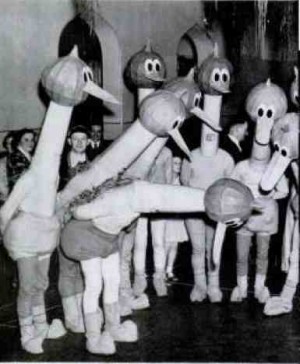
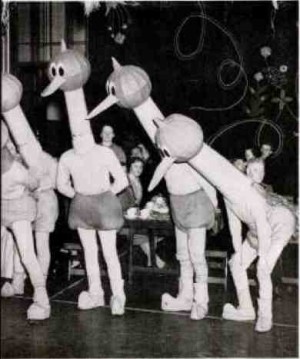
What is the meaning of this display?
The answer is here.
Posted By: Paul - Wed Jul 08, 2015 -
Comments (4)
Category: Animals, Children, 1940s

| Who We Are |
|---|
| Alex Boese Alex is the creator and curator of the Museum of Hoaxes. He's also the author of various weird, non-fiction, science-themed books such as Elephants on Acid and Psychedelic Apes. Paul Di Filippo Paul has been paid to put weird ideas into fictional form for over thirty years, in his career as a noted science fiction writer. He has recently begun blogging on many curious topics with three fellow writers at The Inferior 4+1. Contact Us |




